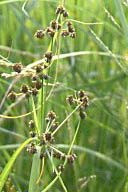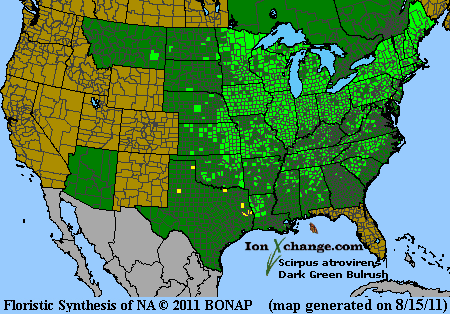 Loading... Please wait...
Loading... Please wait...- Home
- SEEDS
- SEED MIXES
- BUY PLANTS
- Info Request
-
Educational Videos
- Greenhouse Transplanting Demonstration
- Native Seed Cleaning demonstration at Ion Exchange Native Seed and Plant Nursery
- Attracting Butterflies
- Bidens - Bidens cernua Harvest Video
- Big Blue Stem Harvest
- Butterfly Milkweed Video
- Button Blazingstar - Liatris aspera Video
- Buttonbush - Cephalanthus occidentalis Video
- Canada Anemone - Anemone canadensis Harvest Video
- Cardinal Flower - Lobelia cardinalis Video
- Control Burn - Wildflower Field
- Cream Gentian - Gentiana flavida
- Culver's Root - Veronicastrum virginicum Video
- Cup Plant - Silphium perfoliatum Video
- Dormant Seeding | Planting
- Earthyman's Favorite Wildflowers Video
- Eco-Friendly Golf Course Seed Mix
- Floating Islands
- Fringed Loosestrife - Lysimachia ciliata Video
- Giant Yellow Hyssop - Agastache nepetoides Video
- Indiangrass - Sorghastrum nutans Video
- Iowa Prairie Partner Program
- Leadplant - Amorpha canescens (Potted) Video
- Meadow Blazingstar - Liatris ligulistylis
- Midland Shooting Stars - Dodecatheon meadii Video
- Native Plant Nursery Field Irrigation Experiment
- Nodding Onion - Allium cernuum Video
- Ohio spiderwort - Tradescantia ohiensis Video
- Old Man's Beard - Clematis virginiana blooms Video
- Oxeye Sunflower - Heliopsis helianthoides Video
- Prairie Spiderwort - Tradescantia bracteata
- Purple Coneflower - Echinacea purpurea Video
- Rain Garden or Water Garden Video
- Rattlesnake Master - Eryngium yuccifolium Video
- Riverbank Stabilization - Wetland Plants
- Rose Mallow - Hibiscus militaris Video
- Rosinweed - Silphium integrifolium Video
- Royal Catchfly - Silene regia
- Showy Tick Trefoil - Desmodium canadense Video
- Sneezeweed - Helenium autumnale Video
- Swamp Betony - Pedicularis lanceolata Video
- Swamp Milkweed - Asclepias incarnata Video
- Sweet Blackeyed Susan - Rudbeckia subtomentosa Video
- Tall Coreopsis - Coreopsis tripteris Video
- Urban Butterfly Garden
- Wild Bergamot - Monarda fistulosa Video
- Wild Geranium - Geranium maculatum Harvest
- Wild Goldenglow - Rudbeckia lanciniata Video
- Wild Petunia - Ruellia humilis Harvest Video
- Woodland Knotweed - Polygonum virginianum Video
- Yellow Coneflower - Ratibida pinnata Video
- Blog
- Resources
- Policies
Contact Us
Phone:
563-419-0837
or 563-535-7231
Email:
hbright@ionXchange.com
Browse Products
Add to Wish List
You Recently Viewed...
Our Newsletter
Product Description
Dark Green Bulrush (Scirpus Atrovirens) is a native perennial plant is about 2
| Sun Exposure | Prairie |
| Soil Moisture | Wet, Wet Mesic |
| Bloom Time |
|
| Bloom Color | |
| Max Height | 5 feet |
| Wetland Code | OBL |
| Germ Code | C(60) or M, D |
| Seeds Per Ounce | 460,000 |
"This native perennial plant is about 2'to 4' tall, unbranched, and more or less erect; vegetative clumps of plants are often formed. The culm is green and glabrous. The alternate leaves are up to 1½' long and ¾"" across; there are up to 8 leaves per culm. The leaf blades are yellowish green to dark green, linear in shape, flat, glabrous, rough along the margins, and somewhat floppy. Venation of the leaf blades is parallel; on some leaves, there are observable cross-veins connecting the parallel veins at short intervals along the blade (septate). The sheaths are glabrous and septate as well. The culm terminates in an inflorescence consisting in a compound umbel (less often, a simple umbel is produced); there are 3 or more spreading leafy bracts underneath this umbel. The leafy bracts have the same characteristics as the leaf blades; they are up to 1' long and ½"" across. The bracts are variable in size, but at least one of them is longer than the inflorescence. A typical compound umbel produces several branches (often called 'rays') in all directions; these branches are variable in length, but can be several inches long. Each of these branches terminates in a small cluster of 6-26 spikelets, from which short branchlets radiate in all directions to terminate into additional clusters of spikelets. In some plants, secondary branchlets develop to form even smaller clusters of spikelets. Both the branches and branchlets of the compound umbel are stiff and straight. On most plants, the spikelet clusters are arranged into irregular umbellets; they are often somewhat compressed together. At the base of each umbellet, there are one or more slender leafy bractlets; these bractlets are much smaller than the leafy bracts at the base of the compound umbel. Each spikelet is about 3-6 mm. (1/8–1/4"") in length; it is greenish brown to blackish brown and ovoid, consisting of numerous flowers with overlapping scales. These flowers have 3 stamens and a tripartite style. The outer scale of each flower is ovate, some shade of brown, and about 1.5–2 mm. in length (less than 1/8""). The blooming period occurs during early to mid-summer. Pollination is by wind. Each flower is replaced by a tiny achene about 1.0 mm. long; this achene is surrounded by 6 bristles that are about the same length as the achene. The ripened achenes are 3-angled and light brown. The root system consists of rhizomes and fibrous roots.
"The preference is full to partial sun and wet to moist conditions. This plant tolerates many kinds of soil, including those containing clay, gravel, sand, or abundant organic material. The leaves will become yellowish green if the soil dries out.
Edible Uses: Unknown
Medicinal Uses: Unknown
Herbal Uses: Unknown











